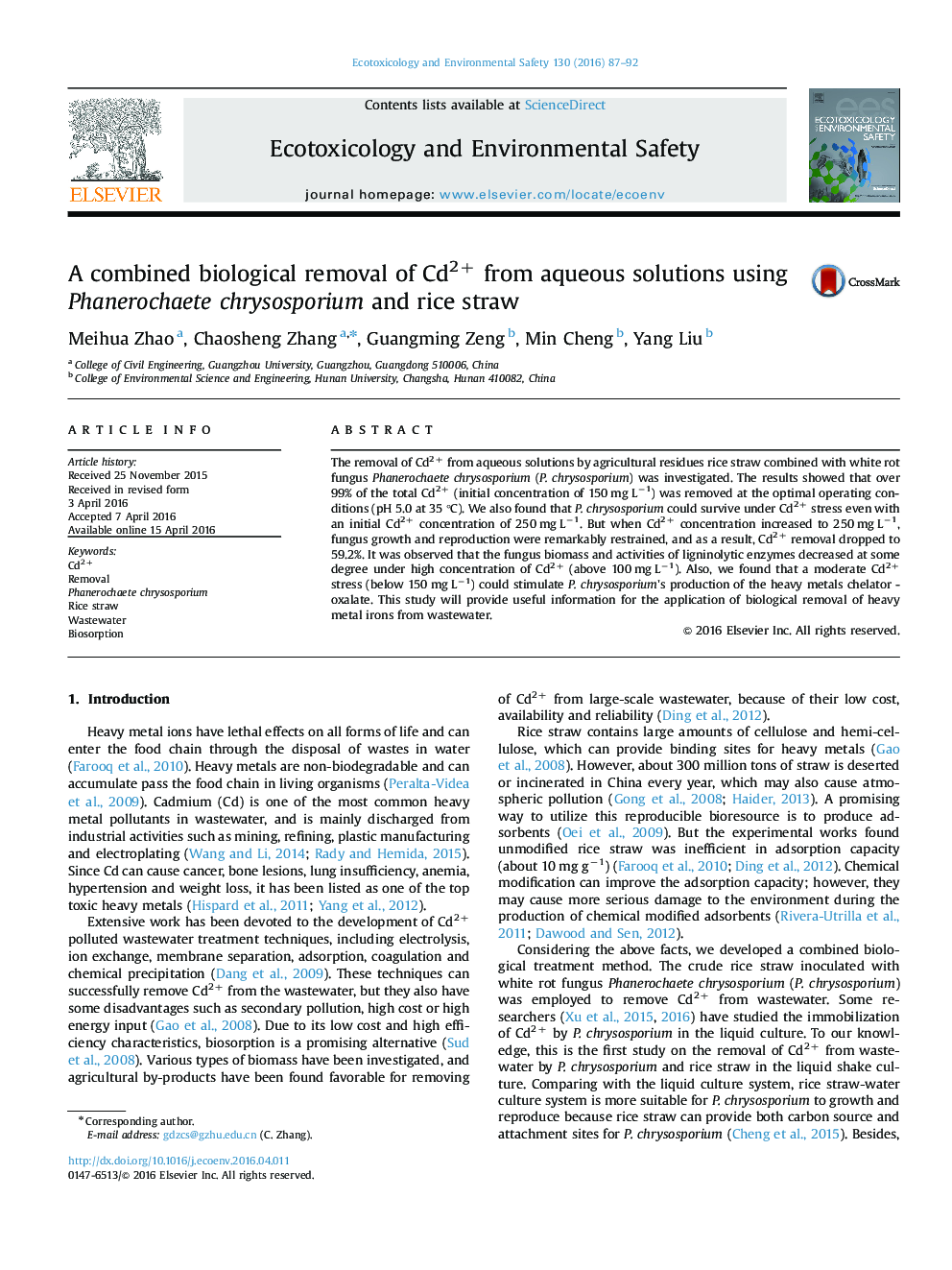| کد مقاله | کد نشریه | سال انتشار | مقاله انگلیسی | نسخه تمام متن |
|---|---|---|---|---|
| 4419194 | 1618933 | 2016 | 6 صفحه PDF | دانلود رایگان |

• Fungus combined with straw for the removal of Cd2+ from solutions was investigated.
• The optimal operating conditions were 30 °C and pH 5.0.
• Over 99% removal for an initial Cd2+ concentration of 150 mg l−1 was obtained.
• High Cd2+ concentration restrained the fungus growth and reproduction.
• The activities of ligninolytic enzymes decreased under high concentration of Cd2+.
The removal of Cd2+ from aqueous solutions by agricultural residues rice straw combined with white rot fungus Phanerochaete chrysosporium (P. chrysosporium) was investigated. The results showed that over 99% of the total Cd2+ (initial concentration of 150 mg L−1) was removed at the optimal operating conditions (pH 5.0 at 35 °C). We also found that P. chrysosporium could survive under Cd2+ stress even with an initial Cd2+ concentration of 250 mg L−1. But when Cd2+ concentration increased to 250 mg L−1, fungus growth and reproduction were remarkably restrained, and as a result, Cd2+ removal dropped to 59.2%. It was observed that the fungus biomass and activities of ligninolytic enzymes decreased at some degree under high concentration of Cd2+ (above 100 mg L−1). Also, we found that a moderate Cd2+ stress (below 150 mg L−1) could stimulate P. chrysosporium's production of the heavy metals chelator - oxalate. This study will provide useful information for the application of biological removal of heavy metal irons from wastewater.
Figure optionsDownload as PowerPoint slide
Journal: Ecotoxicology and Environmental Safety - Volume 130, August 2016, Pages 87–92